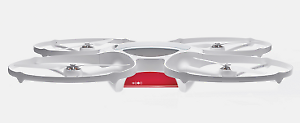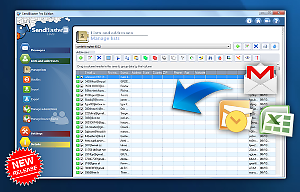 It would be cool, but do you give the drone a Christmas present?
It would be cool, but do you give the drone a Christmas present?
Matternet To Test The First Real Drone Delivery System In Switzerland
Techcrunch – By: John Biggs – “The Swiss postal service, Swiss Post, is going to attempt drone deliveries for the first time ever using Matternet, a company working on perfecting drone-based delivery systems. The first tests will happen in Switzerland this summer as proof of concept to ‘to clarify the legal framework, consider local conditions and explore the technical and business capabilities of the drones.’
That’s right: robots are about to deliver our mail.
The first Matternet drone, called the ONE, can transport items up to 1 kilogram (2.2 pounds) over 20 kilometers – or about 12 miles – on one charge. The company hopes to use the drones to deliver light packages like medicine, documents, and parts.
Founded by Andreas Raptopoulos and Paola Santana, the company was rooted in Raptopoulos dream of building a flying car. After attending the Singularity University summer program at NASA Ames Laboratory, he founded Matternet to bring quadcopters – on a smaller scale – to places where they were needed most. They have raised $2.2 million in seed capital from investors including Flextronics, Scott Banister, and Nas.
Matternet previously tested its drones in Haiti where it delivered medicine and supplies to inaccessible areas. The company now hopes to run three pilots in Switzerland and they have already flown more drone hours than anyone else in the world.
‘Our product is vertically integrated into a complete transportation solution. Swiss Post comes to us, we supply them all the technology (drones, landing pads, batteries, charging stations, cloud software) and they just focus on operations,’ said Raptopoulos.
‘Quadcopters may be the biggest invention in vehicle technology since the internal combustion engine. They allow us to build vehicles that are extremely simple mechanically and are 90%+ software which is bound to improve dramatically over then next 3-5 years. Things like weather performance, performance in GPS-denied environments, ‘sense and avoid,’ etc will make these vehicles way more robust and useful by the end of the decade. This platform will allow software to eat transportation,’ he said.
The ultimate goal is to bring transportation to places where it is currently nearly impossible. By sending a drone – or a few drones – into sparsely-populated areas, you can create a flying postal service that is autonomous, safe, and speedy.”
 SendBlaster allows you to send email to a list, and does it in style! The regular version is FREE, and the Pro version adds features, and is $129.00 for a lifetime license.
SendBlaster allows you to send email to a list, and does it in style! The regular version is FREE, and the Pro version adds features, and is $129.00 for a lifetime license. It would be cool, but do you give the drone a Christmas present?
It would be cool, but do you give the drone a Christmas present? Turn your HD TV into a PC, OK, that would be cool!
Turn your HD TV into a PC, OK, that would be cool!



